Sometimes, there are spots in our yard or garden that don’t receive as much sun. This partial, dappled, or full shade can make it difficult to grow many items. However, many shrubs thrive in shaded environments. But which ones do best in the hotter climates of Zone 8 shade gardens? You will find the answer below! This is by no means an exhaustive list, though it will hopefully spark some inspiration before you visit your local nursery.
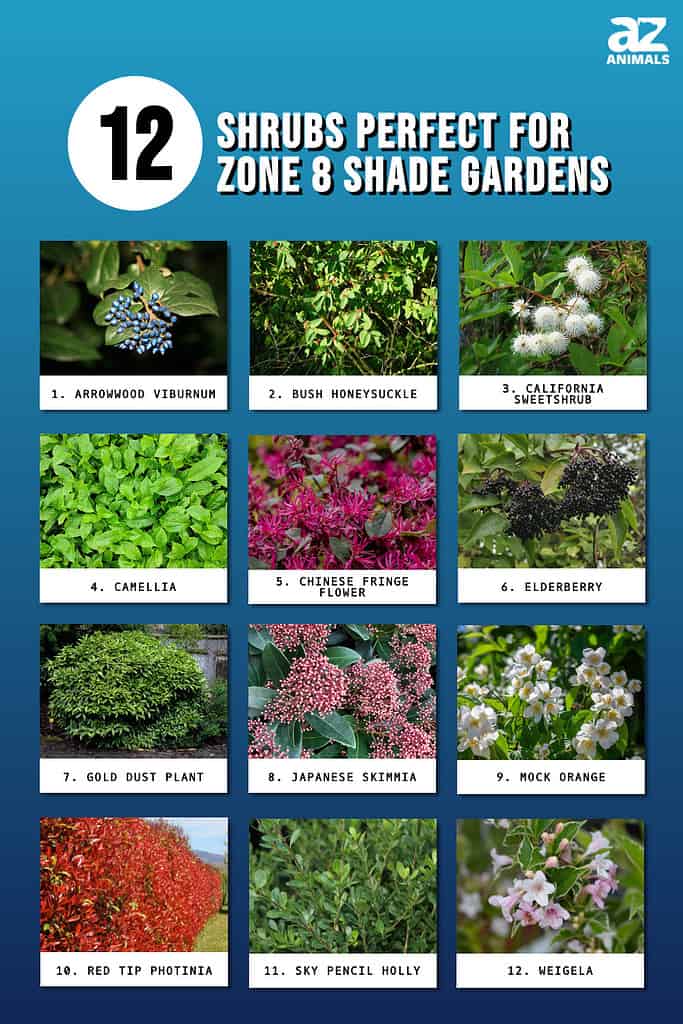
1. Arrowwood Viburnum
Arrowwood viburnum (Viburnum dentatum) is technically a deciduous shrub. However, they routinely grow as large as ten feet tall, and some have even reached fifteen feet tall under the optimum growing conditions! So, if you want to add this beauty to your landscape, make sure you leave enough room. Its spread is comparable to its height. It has stunning white unscented blossoms that arrive every spring. And it happily grows in partial shade.
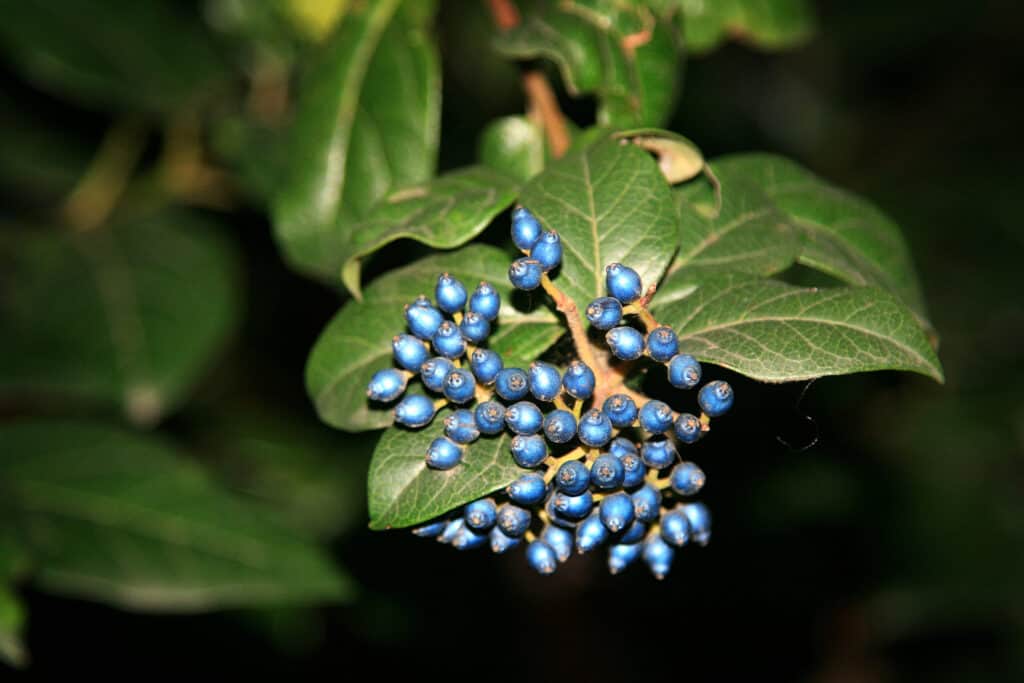
Arrowwood viburnum shrubs reach ten feet tall and attract several bird species.
©photosbelkina/Shutterstock.com
2. Bush Honeysuckle
If you have some extra space in your Zone 8 shade garden, consider planting a bush honeysuckle (Lonicera tatarica) shrub. This highly adaptable plant does well in nearly any condition you plant it in. While it is technically considered a shrub, it is also a vining plant that reaches heights of 10 to 12 feet tall. Its fragrant blossoms attract ample wildlife, including bees and hummingbirds. However, there is a note of caution. Before you plant, check with your local extension office. Some states consider bush honeysuckle an invasive species.

Honeysuckle is a highly adaptable plant that does well in nearly any condition you plant it in.
©crystaldream/Shutterstock.com
3. California Sweetshrub
The California sweetshrub (Calycanthus occidentalis) is native to the Southwestern United States. It tolerates most types of soil and a fair amount of shade. However, planting it in a shaded area will stunt its growth slightly. It may only grow to around six feet tall, rather than its maximum height of twelve feet. Its highly fragrant, purple-brown flowers show up every summer around June.

This fascinating plant is native to the Southwestern United States. It tolerates partial shade well, though it likely won’t grow as large.
©passion4nature/ via Getty Images
4. Camellia
Yes, you can grow your own tea! Camelia (Camellia sinensis) is a shrub that produces delicious tea leaves. It thrives under protection from an upper canopy and does well in dappled or partial shade. Camelia plants are slow-growing and relatively easy to care for. They can grow up to fifteen feet tall and eight feet wide. If you hope to grow C. sinensis for its leaves, consider purchasing a book to help guide you.
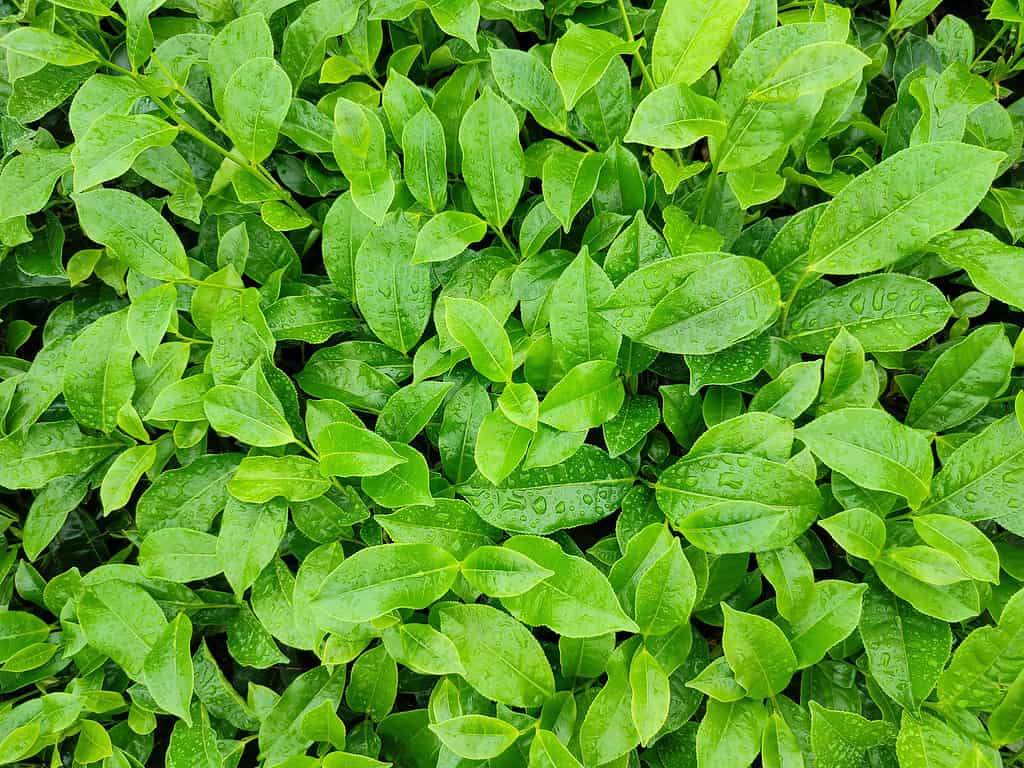
is a shrub that produces the tea leaves that make up your favorite black and green teas.
©R. Haidy/Shutterstock.com
5. Chinese Fringe Flower
Consider planting a Chinese fringe flower (Loropetalum chinense) if you are interested in trying something new in your Zone 8 shade garden. This medium-sized shrub belongs to the witch hazel family and has a slightly rounded growing habit. It typically grows between six and eight feet tall and wide, although it can get larger under ideal conditions. Its dark green leaves get offset every spring by jaw-dropping flowers. Blossom color varies based on cultivar, but each one is gorgeous and has a delicate fragrance.
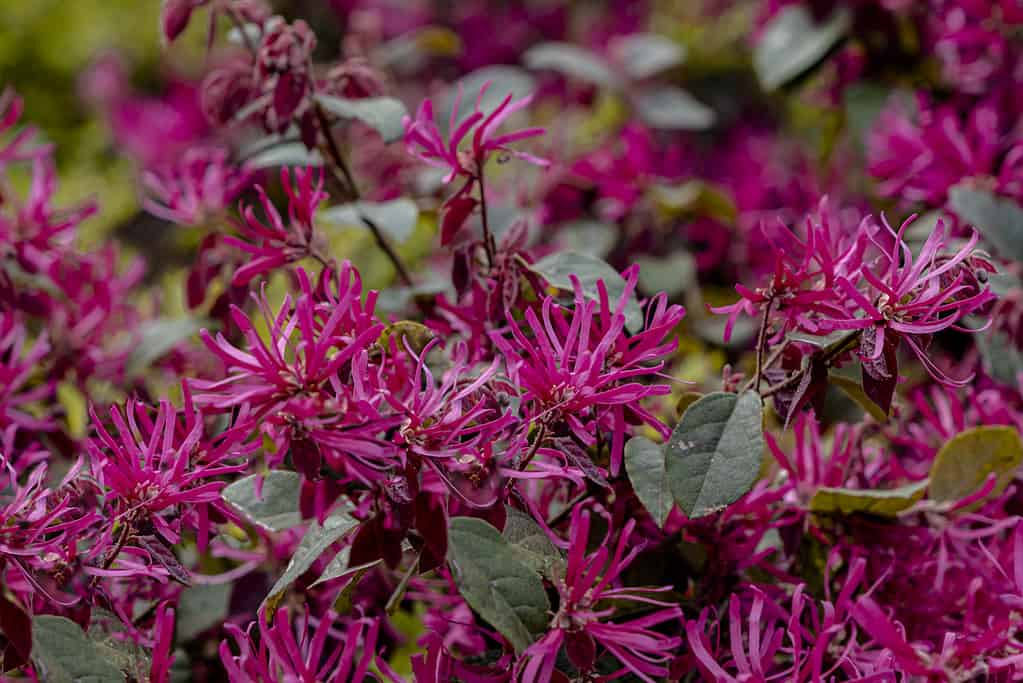
Chinese fringe flowers have delicate, wispy petals in deep, rich colors that contrast with the dark green foliage.
©Yasin Caglayan/ via Getty Images
6. Elderberry
Elderberries (Sambucus spp.) are growing in popularity throughout the United States. You can’t walk into a grocery store during the winter without getting bombarded by elderberry syrup displays. While this fruit is prized for its medicinal benefits, it is also tasty in other applications, and the plant makes a stellar addition to any garden. It’s a larger shrub, with some varieties reaching eight to ten feet high and tall. While you can prune them down to a more manageable state, it is also possible to plant them as a hedge and let them run wild. Not all varieties are particularly heat tolerant. But most tolerate partial shade and will thrive in Zone 8 shade gardens.
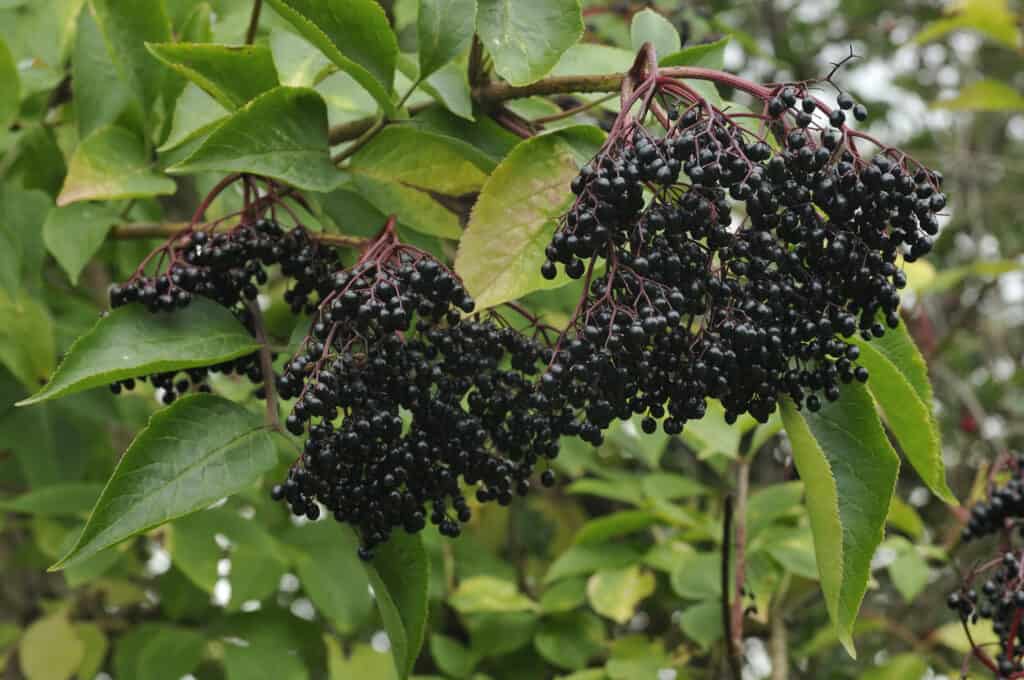
Elderberry shrubs make fantastic hedges and also provide delicious and nutritious berries.
©Martin Fowler/Shutterstock.com
7. Gold Dust Plant
Aucuba japonica goes by many common names, including gold dust plant, Japanese laurel, and aucuba. It is native to Japan and East Asia, though it is happy in any Zone 8 garden. This evergreen shrub prefers partial to full shade and tolerates poor soil. So, it is ideally suited for areas of your garden that other plants can’t survive in. Gold dust plants grow up to ten feet tall and six feet wide, so feel free to use them as a privacy screen or hedge!
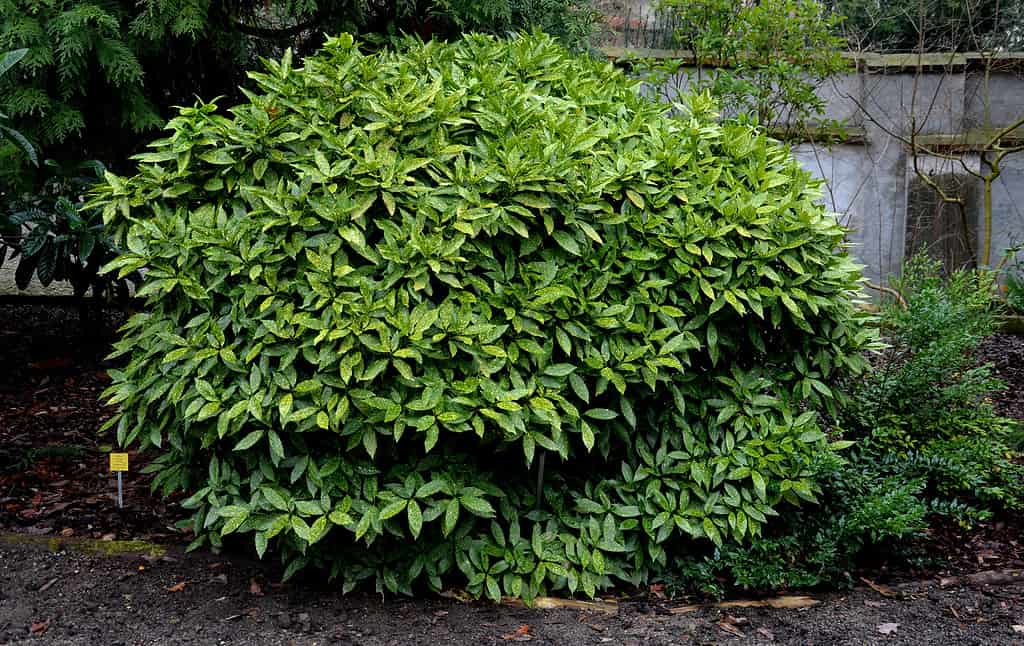
Gold dust plants grow best in full to partial shade. It also tolerates poor soil, making it the ideal addition to areas where nothing else wants to grow.
©beekeepx/ via Getty Images
8. Japanese Skimmia
This broadleaf evergreen shrub is native to China and Japan. The Japanese skimmia (Skimmia japonica) was born to be a shade plant! It does best in full shade to partial shade. Plus, the lack of sunlight does not hurt its beautiful white and cream blossoms. The fragrant flowers attract birds when they arrive every spring. Its short stature (approximately four feet high and wide) makes it ideal for hedges and borders.
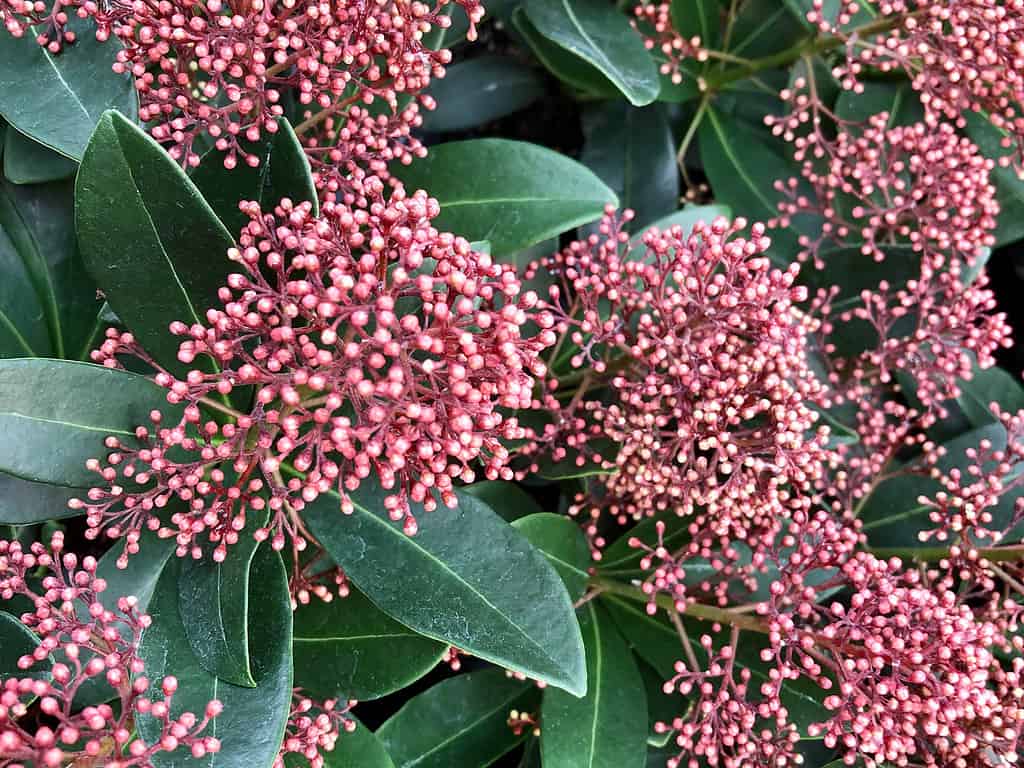
Birds love the gorgeous and fragrant flowers that bloom on the Japanese skimmia.
©Roger Mechan/ via Getty Images
9. Mock Orange
The mock orange (Philadelphus spp.) family of shrubs has a wide selection to pick from. They range in size from three feet tall to over twenty feet tall! However, most species run on the taller side. They primarily have stunning white blossoms with an intoxicating fragrance. But you can find some species with floral variation. They do prefer light shade, so avoid planting them in the heavily shaded sections of your land.

Mock orange bushes have stunning white blossoms with an intoxicating fragrance.
©Iva Vagnerova/Shutterstock.com
10. Red Tip Photinia
The red tip photinia (Photinia x fraseri) is an evergreen shrub that grows quite large. It can reach up to twenty feet tall with a similar spread. It develops stunning reddish young leaves, which help showcase its white flowers every spring. But don’t try to sniff these blossoms. They have an unpleasant aroma if you get too close. Thanks to their size and smell, red tip photinia would make the perfect privacy screen around the edge of your property.

Photinia hedges look spectacular when they show off their new red leaves.
©saraTM/ via Getty Images
11. Sky Pencil Holly
Sky pencil holly or Japanese holly (Ilex crenata) is native to East Asia and Japan. Its natural habitat is deeply shaded forests and thickets. So it will be quite at home in a Zone 8 shade garden. This dense shrub develops a rounded shape and grows up to ten feet tall and eight feet wide. Smaller, more compact cultivars are available if you are short on space. Additionally, they can all handle fairly aggressive pruning. That would allow you to plant them in a tighter spot or maintain a shorter hedge.
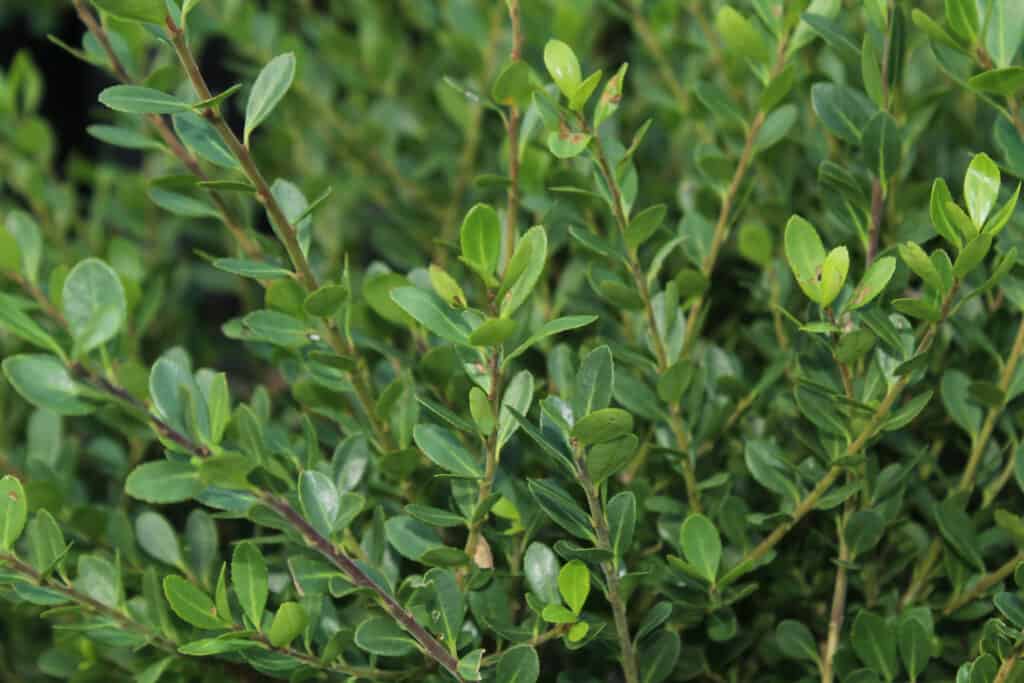
Sky pencil holly shrubs are dense and showcase bright green foliage. Many grow up to 10 feet tall, but other cultivars are smaller and compact.
©iStock.com/keepphotos
12. Weigela
These lovely shrubs belong to the Honeysuckle family and run on a smaller size. Most weigela (Weigela spp.) varieties grow approximately 36 to 48 inches tall. But you can also find dwarf varieties that grow 12 to 18 inches tall. Since Weigela produces the largest, most colorful blossoms in full sunlight, you will want to select variegated varieties for your Zone 8 shade garden. These species and cultivars tend to get sunburned in the afternoon, so partial shade is their friend.
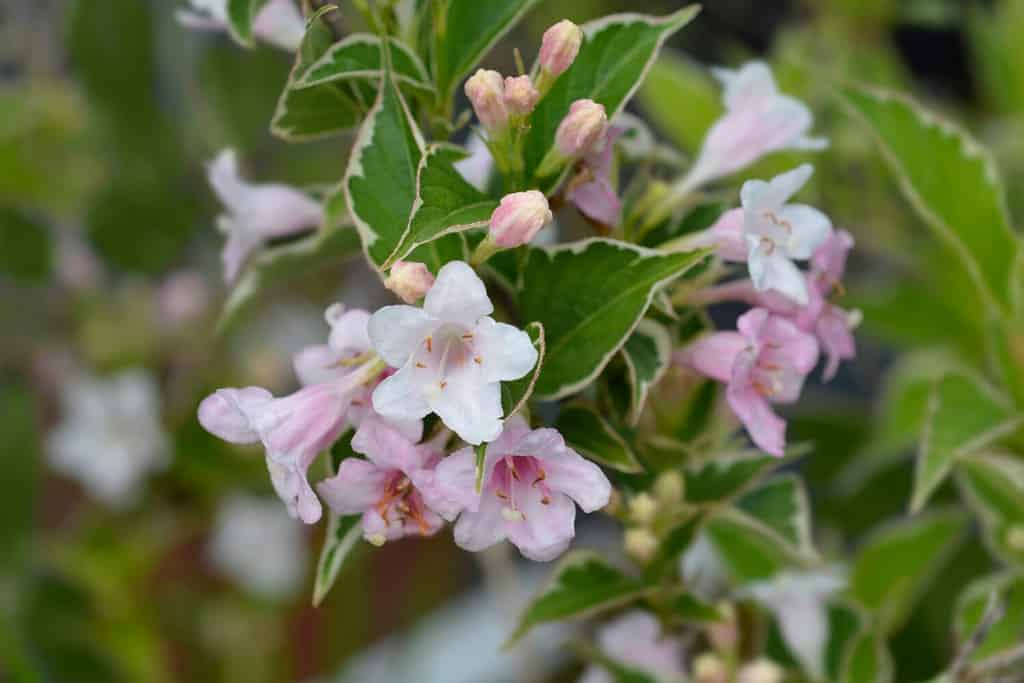
Weigela produces the largest, most colorful blossoms in full sunlight.
©Nahhana/Shutterstock.com
Summary of 12 Shrubs That Thrive in Zone 8 Shade Gardens
| Number | Shrub |
|---|---|
| 1 | Arrowwood Viburnum |
| 2 | Bush Honeysuckle |
| 3 | California Sweetshrub |
| 4 | Camellia |
| 5 | Chinese Fringe Flower |
| 6 | Elderberry |
| 7 | Gold Dust Plant |
| 8 | Japanese Skimmia |
| 9 | Mock Orange |
| 10 | Red Tip Photinia |
| 11 | Sky Pencil Holly |
| 12 | Weigela |
The photo featured at the top of this post is © Roger Mechan/ via Getty Images
Thank you for reading! Have some feedback for us? Contact the AZ Animals editorial team.







